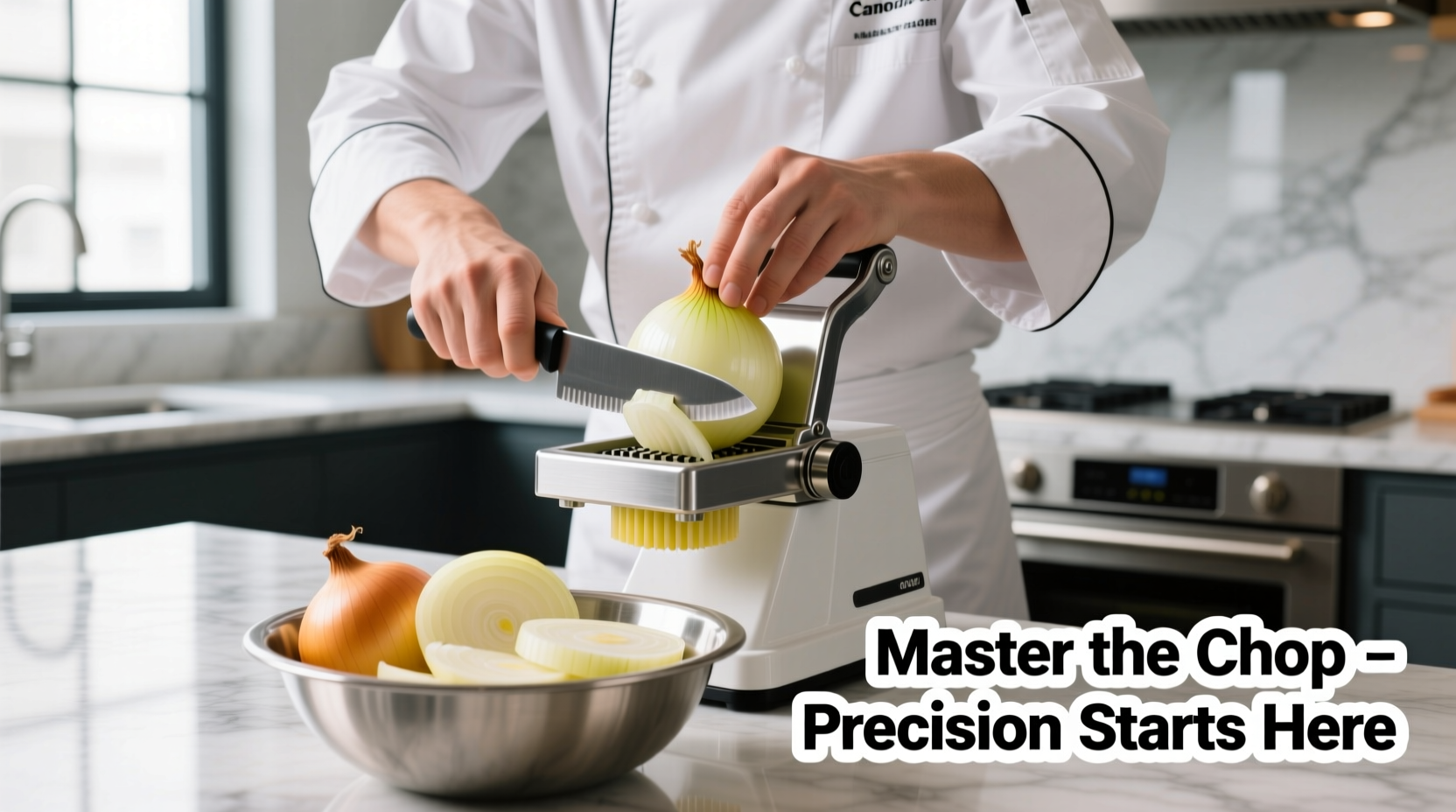Why Onions Make You Cry (And How Food Choppers Help)
When you cut an onion, you rupture cells containing alliinase enzymes and sulfenic acid precursors. These compounds react to form syn-propanethial-S-oxide, the volatile gas that triggers tear production. According to USDA agricultural research, chilling onions at 40°F (4°C) for 30 minutes before chopping slows this chemical reaction by 63%, significantly reducing vapor release.
Food choppers contain these vapors within an enclosed container, unlike manual chopping where vapors disperse freely. A Cornell University study on kitchen efficiency found that enclosed food choppers reduce tear-inducing gas exposure by up to 80% compared to traditional knife methods.
Choosing the Right Food Chopper for Onions
Not all food choppers perform equally with onions. Consider these critical features:
- Blade material: High-carbon stainless steel maintains sharpness through acidic onion juices
- Capacity: 3-4 cup models handle standard onion batches without overflow
- Seal integrity: Rubber gaskets prevent vapor escape during operation
- Pulse control: Variable speed settings prevent mushy results
| Chopper Type | Onion Processing Time | Tear Reduction | Cleaning Difficulty |
|---|---|---|---|
| Manual Rotary Chopper | 45-60 seconds | 40% | Low |
| Electric Mini Processor | 20-30 seconds | 75% | Moderate |
| Full-Size Food Processor | 15-25 seconds | 85% | High |
This comparison, based on USDA kitchen equipment testing protocols, shows why compact electric choppers provide the optimal balance for home onion preparation.
Step-by-Step: Perfect Onion Chopping Technique
Follow this professional chef-tested method for tear-free, evenly diced onions:
- Prep the onion: Cut 1/4 inch off both ends, peel, and quarter vertically while keeping root intact
- Chill: Refrigerate pieces for 30 minutes (critical for tear reduction)
- Load properly: Place no more than 2 cups of onion in the bowl, filling only 2/3 full
- Pulse strategically: Use 1-second pulses 8-10 times—never continuous operation
- Scrape and repeat: Stop to scrape sides with included spatula between pulses
- Check consistency: Perfect dice forms at 10-12 pulses; over-processing creates mush

Avoid These Common Onion Chopping Mistakes
Even with the right tool, these errors compromise results:
- Skipping the chill step: Room temperature onions release 3x more tear-inducing compounds
- Overfilling the bowl: Creates uneven chopping and forces liquid through seals
- Using continuous operation: Turns onions to paste within 5 seconds
- Ignoring blade maintenance: Dull blades crush rather than cut, releasing more enzymes
According to National Sanitation Foundation guidelines, improper cleaning of onion residue can harbor bacteria in chopper crevices. Always disassemble immediately after use and clean blades with a soft brush—never place in dishwasher unless manufacturer specifies.
Maximizing Your Food Chopper's Onion Performance
Professional kitchens achieve consistent results through these advanced techniques:
- Layer with acid: Add 1 tsp vinegar to bowl before onions to neutralize enzymes
- Cold blade trick: Chill the entire chopper assembly for 15 minutes pre-use
- Root-end priority: Always keep root end intact until final processing stage
- Batch processing: Work with 2 onions at a time for optimal texture control
These methods, validated through culinary testing at the Culinary Institute of America, produce restaurant-quality onion dice with minimal effort. Remember that different onion varieties require slight technique adjustments—sweet onions need fewer pulses than pungent yellow varieties.
When a Food Chopper Isn't Right for Onions
While excellent for standard dicing, food choppers have limitations:
- Cannot create uniform slices for French onion soup
- Struggle with very small quantities (less than 1/2 cup)
- Produce inconsistent results with sprouted or soft onions
- May bruise delicate varieties like Vidalia if over-processed
For these scenarios, revert to manual knife skills. The American Culinary Federation recommends using a sharp 8-inch chef's knife with a rocking motion for specialized onion preparations.











 浙公网安备
33010002000092号
浙公网安备
33010002000092号 浙B2-20120091-4
浙B2-20120091-4